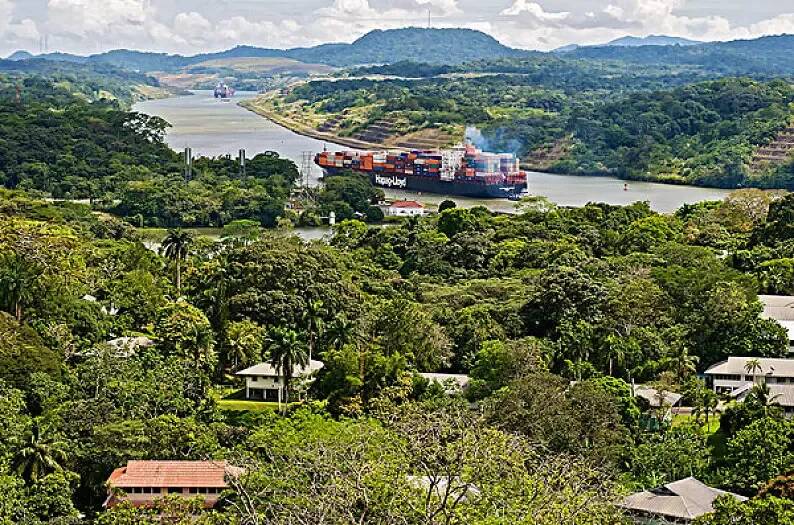Panama predicts climate change! Reduced rainfall and rising temperatures will affect agricultural production
Recently, the Panamanian National Plan for Climate change adaptation Project (NAP) proposed in a public statement on April 25 that due to the impact of the climate crisis, rainfall in the area where Panama's largest hydropower plant and agricultural land is located is expected to be reduced by nearly 2.80% by 2050, directly affecting Panama's food security.

According to the Panamanian Star, NAP recently simulated the latest climate change in Panama from 2050 to 2070 with the help of a global model, referring to the information and historical data of weather stations in the past 30 years.
According to the report, the maximum temperature in the eastern Caribbean and central regions is expected to rise by at least 0.8 ℃ by 2050 and 1.75 ℃ by 2070, while the minimum temperature will be at least 1.1 ℃ and 2.18 ℃ across the country by 2070. According to the report, the increase in the lowest temperature at night leads to changes in plant photosynthesis, a decrease in soil cooling time and an increase in pests caused by pathogens, which have a negative impact on agricultural production.
Agriculture is an important sector of the Panamanian national economy, with an area of 1.71 million hectares of arable land and 20.8% of the labor force engaged in agricultural production. The main crops in Panama are rice, corn and beans, while the main cash crops are bananas, sugar cane and coffee, of which coffee, bananas and sucrose are mainly used for export. Climate and temperature change will affect the growth of crops, thus affecting the export trade of coffee, bananas and other agricultural products.

In addition, it is estimated that by 2050, within the hydroclimatic zone, the annual precipitation will vary from-2.82% to + 4.38%, and from-4.04% to + 6.87% by 2070. By 2050, the area where Panama's largest hydroelectric power plants and agricultural land are located is expected to reduce rainfall by nearly 2.80%, which has a direct impact on Panama's food security. On the other hand, torrential rains in areas vulnerable to floods and landslides will increase.
Affected by El Ni ñ o, Panama now has a drought every three years. As an important waterway for transporting food and energy from the east coast of North America and the Gulf of Mexico to Asia, the Panama Canal has been restricted many times in recent years due to drought and water shortage. the lock system of the Panama Canal needs to be able to lift large ships to a height of 26 meters above sea level, which requires a certain amount of rainfall.
In addition, hydroelectric power in Panama accounts for 44% of the country's total electricity consumption, and in 2020, the Panama Canal Authority reported that temporary water-saving measures would continue to be adopted due to low precipitation in the Panama Canal basin in 2019 to ensure the normal flow of the canal, including the suspension of power generation at the Gatton Lake Hydropower Station.
Heavy rains will also have an impact on agriculture. It was reported as early as 2022 that continuous heavy rainfall affected Panamanian national agriculture. Continuous heavy rainfall has caused floods in many parts of the country, damaged houses and affected people. At that time, the Panamanian Ministry of Agricultural production also said that torrential rains and floods inundated large areas of farmland, making it difficult to assess economic losses.
NAP project coordinator Rene Lopez said that climate change scenarios are only a reasonable and simplified description of the future, but this initiative is essential to help people make more timely and correct decisions that have a direct impact on human health, social welfare and economic growth.
Important Notice :
前街咖啡 FrontStreet Coffee has moved to new addredd:
FrontStreet Coffee Address: 315,Donghua East Road,GuangZhou
Tel:020 38364473
- Prev

2024 Excellence Cup COE returns to Ethiopia
It is understood that the full name of COE is "Cup of Excellen", which translates to the Cup of Excellence. It is the first coffee event held in Brazil in 1999 by the non-profit organization Excellence Coffee Organization (ACE). It is also the first global Internet auction platform for award-winning coffee. And every country
- Next

Sidamo| Bensa coffee region
Ethiopia must be no stranger to coffee lovers. It is Africa's largest Arabica coffee producer. Ethiopia has multiple producing areas. In recent years, Sidamobansa coffee beans have gradually entered people's attention. Sidama is the region with the most awards in the COE
Related
- Being chased out of the rain in front of Starbucks?! Store: Sheltering from rain under umbrellas poses a safety hazard
- The white moonlight has changed?! Lucky launches "Big Winter Pear American"
- Hand-brewed coffee three-stage method, high-sweet and universal brewing method to share! What does the high sweet water level of hand-brewed coffee mean?
- What is the difference between raw, refined and full espresso coffee? How to extract espresso and taste good?
- A complete list of coffee bean names and their meanings! What is Yejia Shefi coffee? Where is Mantelin coffee?
- What grade does Arida Manor Kaduai coffee beans belong to? What treatment is Arida ASD slow anaerobic sun exposure?
- The milk tea cup becomes smaller?! Overlord Tea Girl launches a new "Return to Yunnan" series
- Accused of selling counterfeit and high-priced coffee beans! Well-known boutique coffee brand "Oukelao" bowed and apologized!
- How to make espresso dumplings? Can I eat coffee and glutinous rice balls together?
- Save the unformed and stagnant powder cakes in one second! What is the problem with stagnant water in the powder bowl of the espresso machine?

